Bio 14 Week 2 Nervous System Pt. 1
1/42
Earn XP
Description and Tags
Lec 2
Name | Mastery | Learn | Test | Matching | Spaced |
|---|
No study sessions yet.
43 Terms
Nervous system
1. A main homeostatic control system that links sensory input from the environment with behavioral responses.
2. It also changes in response to experience (memory)
Nervous system characteristics
Input → Interpretation center → Output
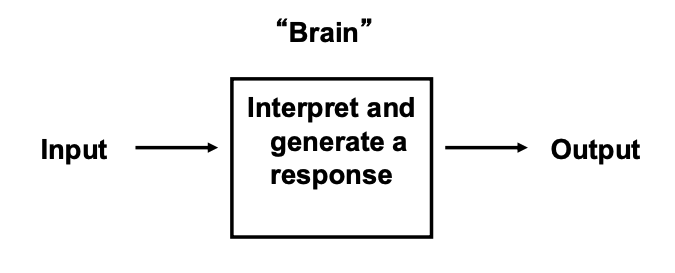
Learning/memory formation
________ and _______ can alter the output due to changes in the interpretation center
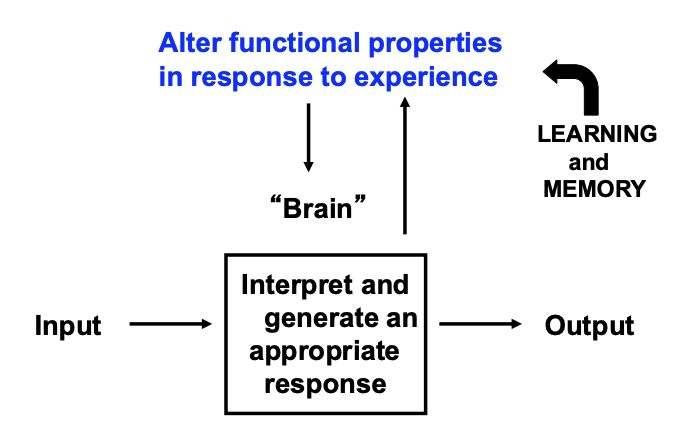
Afferent neuron
The afferent neuron carries sensory information from sensory receptors (such as mechanoreceptors or photoreceptors) toward the central nervous system (CNS). It responds to an incoming stimulus, such as heat, pressure, or light, and transmits this information to the integrating center.
Input to integration center
What is the pathway of information for an afferent neuron?
Peripheral
Afferent neurons are generally part of the ______ nervous system because they connect sensory receptors in the periphery (e.g., skin, muscles, and organs) to the CNS (e.g., the brain and spinal cord).
Integrating center
Part of the CNS that receives and processes sensory input from afferent neurons, interprets that information, and then generates an appropriate response.
Interneuron
Type of neuron that transmits signals between other neurons within the central nervous system (CNS), specifically connecting afferent (sensory) neurons to efferent (motor) neurons
Integrating center
Interneurons are primarily found in the __________ of the nervous system, which include the brain and spinal cord. These centers are part of the central nervous system (CNS)
Sensory Receptors
Specialized cells or nerve endings that detect specific types of stimuli from the environment or the body and send signals via afferent neuron
Efferent Neuron
Motor neurons that transmit signals away from the central nervous system (CNS) to effector organs (such as muscles or glands) to produce a response (Part of PNS)
Effector organs
Tissues/organs that respond to signals from efferent neurons, the output part of the nervous system response, carrying out actions necessary to respond to stimuli/maintain homeostasis.
Dendrite
the bushy, branching extensions of a neuron that receive messages/conduct impulses toward the cell body
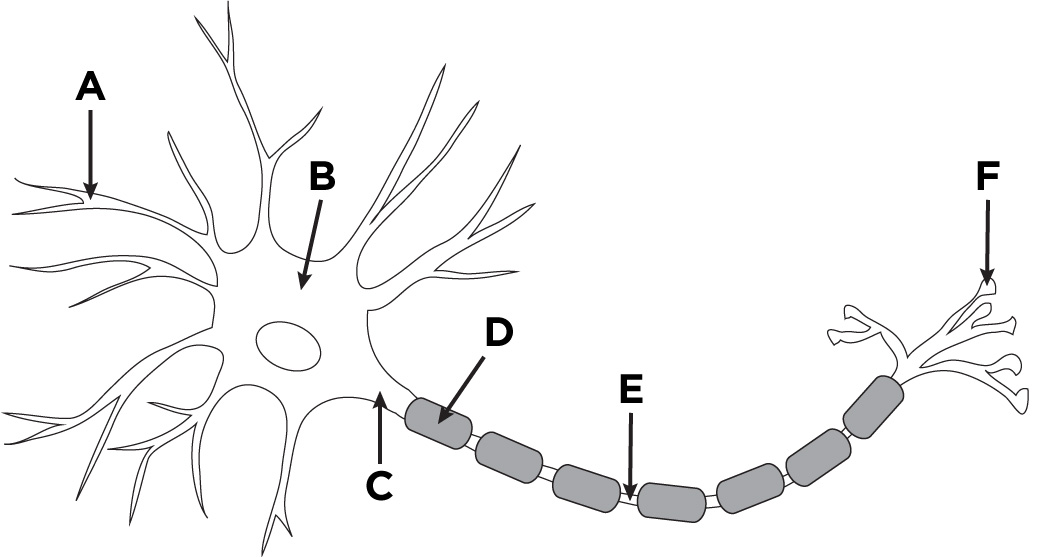
cell body (soma)
Main part of neuron that's responsible for integrating signals from dendrites and initiating the action potential that travels down the axon.
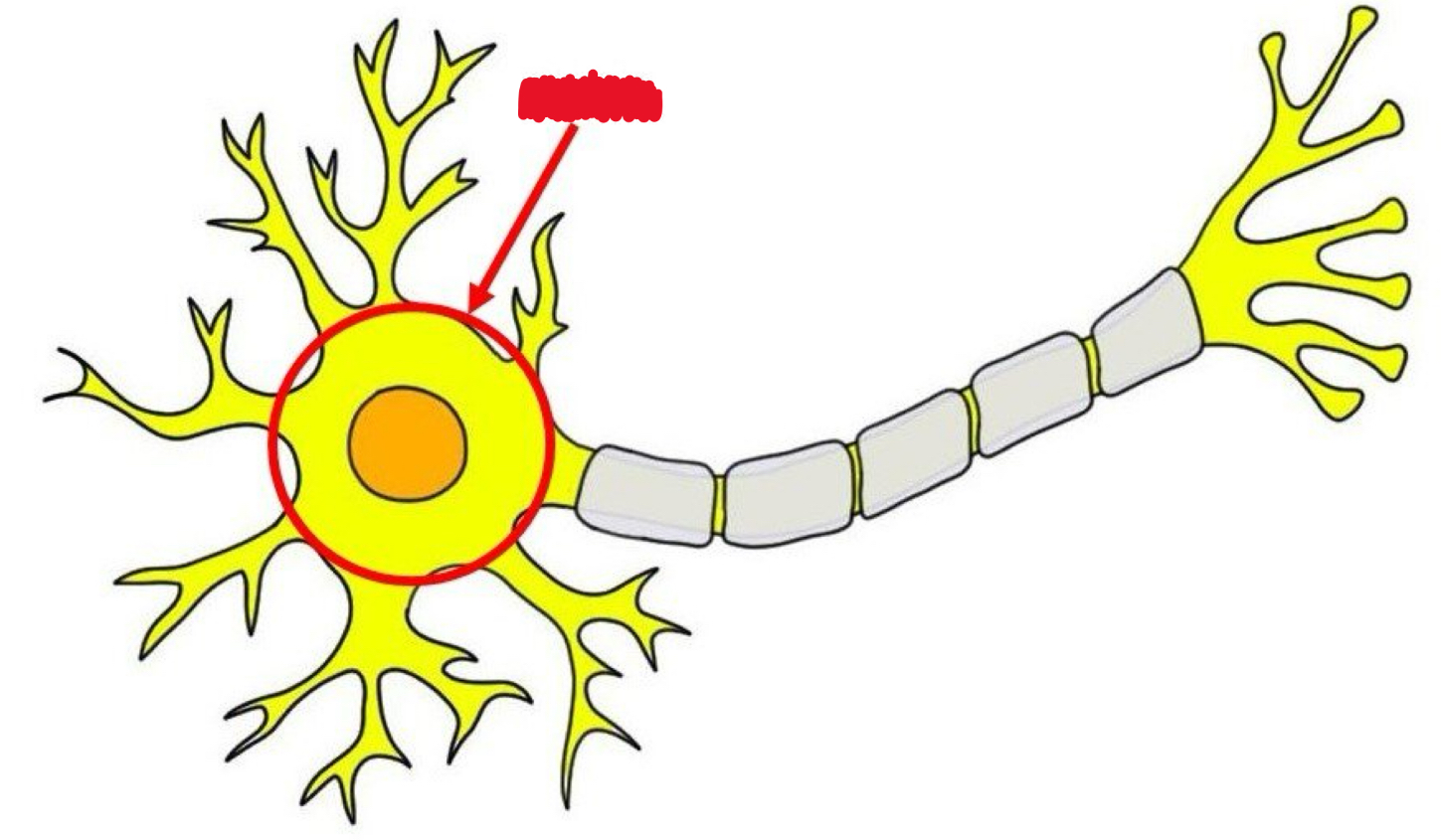
Axon
Long, slender projection of a nerve cell that conducts electrical impulses (action potentials) away from the cell body toward other neurons, muscles, or glands, responsible for signal conduction.
Myelin sheaths
The material that covers axons
Axon terminal
Very end of a neuron's axon, which forms synapses with other neurons, muscle cells, or glands. Responsible for transmitting signals across the synapse
Synapse
a junction between two nerve cells, consisting of a minute gap across which impulses pass by diffusion of a neurotransmitter
Invertebrates
Animal that does not possess a backbone or vertebral column, includes majority of animal species such as insects, worms, jellyfish, snails, and starfish.
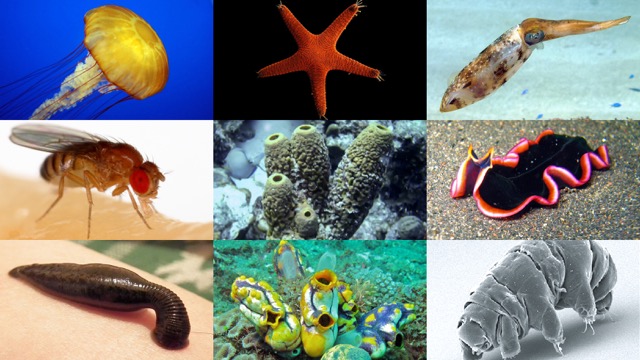
Larger/easier
Invertebrates often have _____ neurons which are ______ for physiological examination (ex: squid, marine snails, leeches)
simpler circuits
Invertebrates often have ________ which helps understand the basics of neuron behavior
Evolutionary origins
Comparisons of nervous systems across animals can inform us about the _________ of our own nervous system
Artificial neural networks
Knowledge gained from animal nervous systems has contributed to the development of _______
Radial symmetry
Symmetry about a central axis
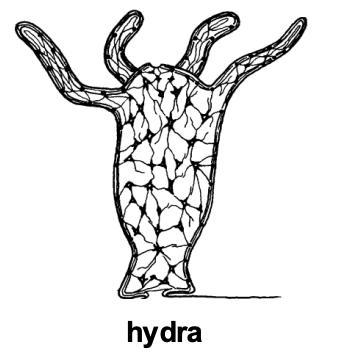
Bilateral Symmetry
Symmetry where organism can be divided by a single plane into two mirror-image halves
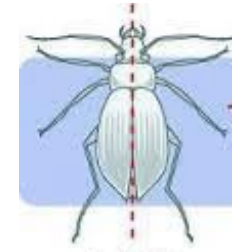
Cnidarians
Invertebrate animals characterized by radial symmetry, a sac-like body with a single opening (mouth/anus), and specialized stinging cells (nematocysts), they tend to be marine/predatory
Hydra, jellyfish, coral
Cnidarian that is a solitary, carnivorous jellyfish-like animal often found in freshwater environments and known for its regenerative abilities.
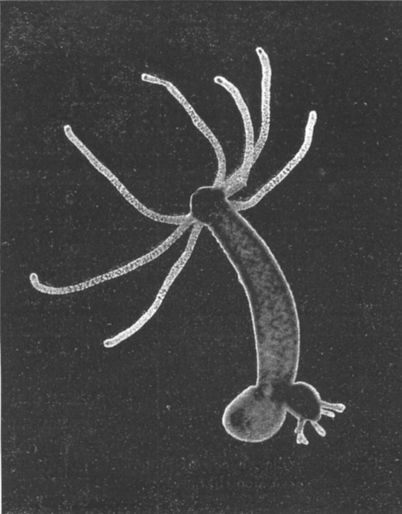
Radial
Cnidarians are examples of organisms with _____ symmetryNer
Nerve net
A diffuse, decentralized nervous system that consists of a network of interconnected neurons spread throughout the body, allowing for basic responses to stimuli but lacking a centralized brain or ganglia.
Cephalization
Nerve tissues localize at the anterior (front) end of the body to form command center for the nervous system, typically associated with bilateral symmetry and directed movement
Invertebrates/vertebrates
Both ______ and _____ can have bilateral symmetry
Nerve cord
A major bundle of nerves that extends longitudinally through the body of many animals, serving to transmit signals between the brain (if present) and the rest of the body. In invertebrates, it is typically ventral, while in vertebrates, it is a dorsal, hollow structure (the spinal cord)
Ganglia
Clusters of nerve cell bodies that act as local processing centers
ganglia/nerve cord
In invertebrates with bilateral symmetry, the nervous system can present in _______ or _______
insects, flatworms, squid, leech
Examples of invertebrates with bilateral symmetry
fish, amphibians, reptiles, mammals
Examples of vertebrates with bilateral symmetry
brain/spinal cord/peripheral nerves
In vertebrates with bilateral symmetry, the nervous system usually presents as ______, ______, and _______
midbrain/smaller
In mammal brains, the _____ is _____ compared to other vertebrates
forebrain/cerebellum/larger
In mammal brains, the _____ and ________ is _____ compared to other vertebrates
Quadruped
an animal with four feet
Biped
an animal with two feet